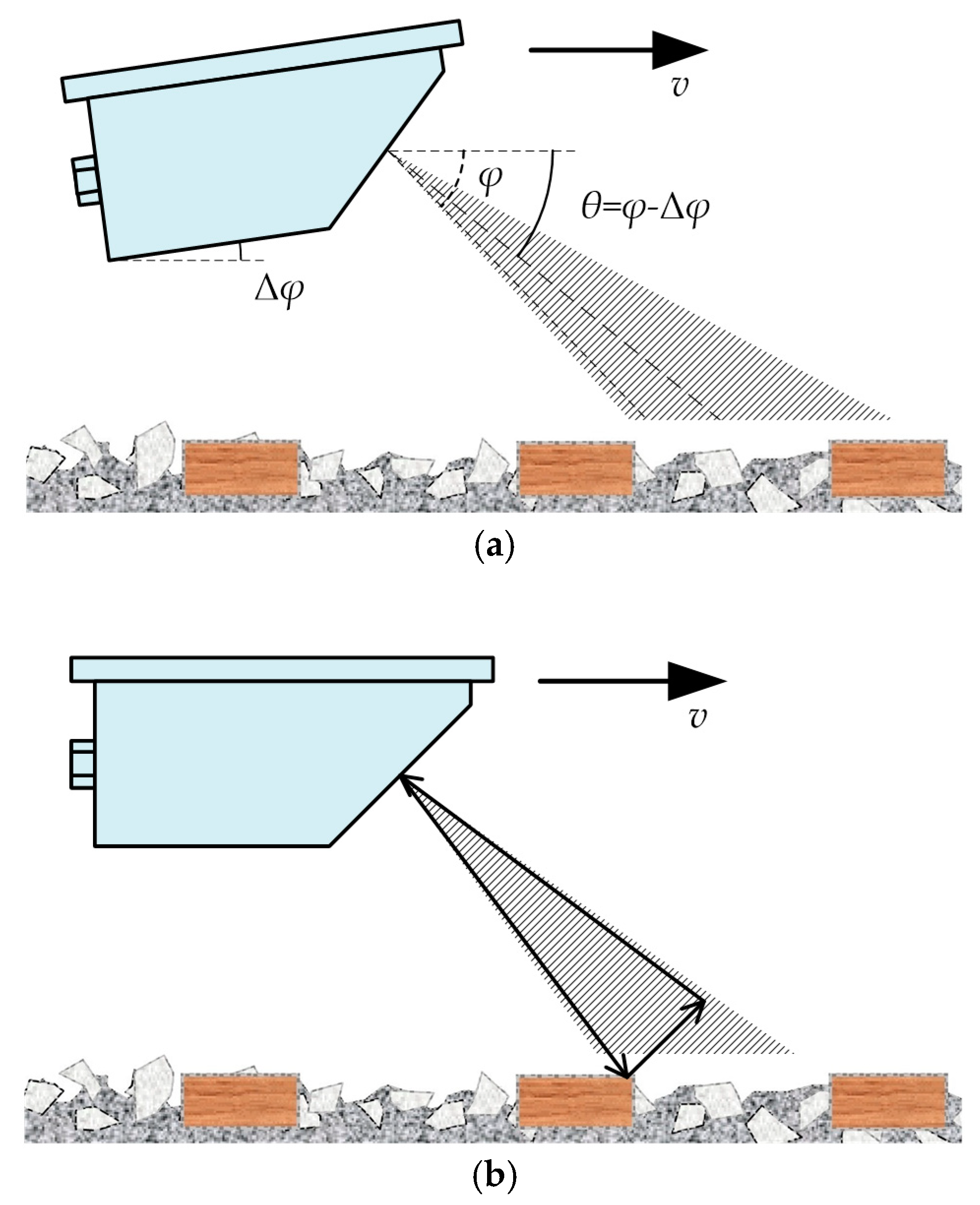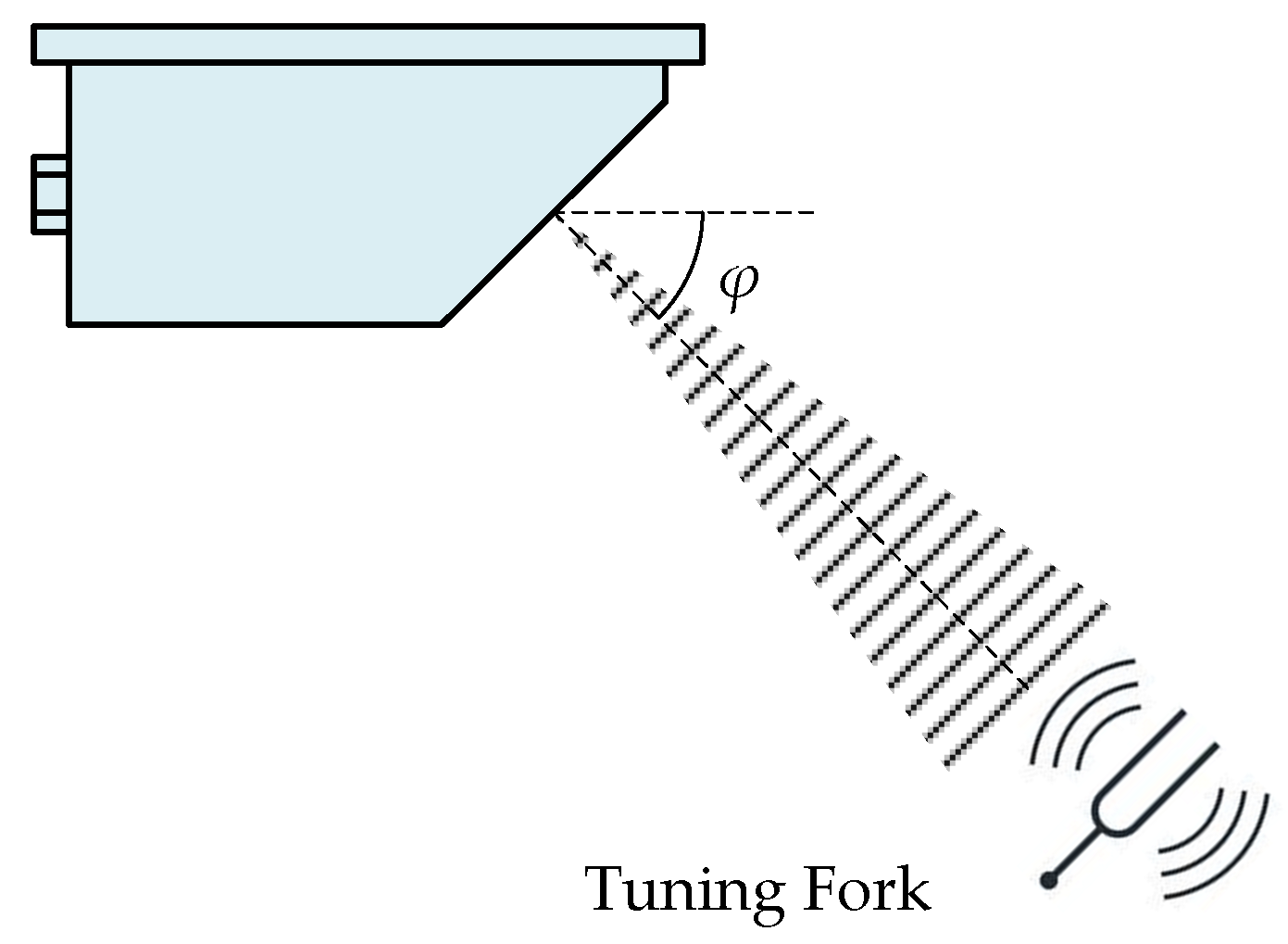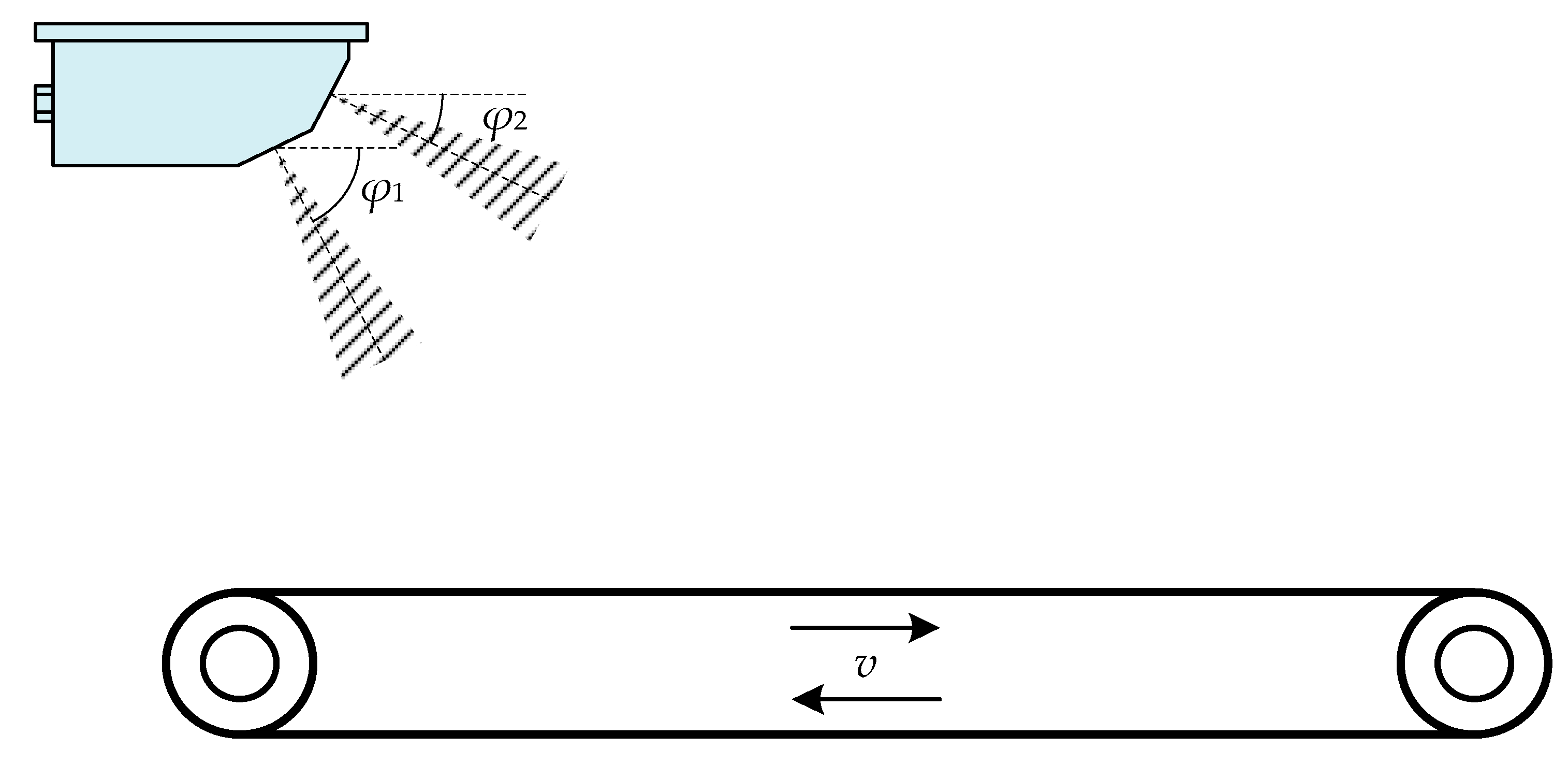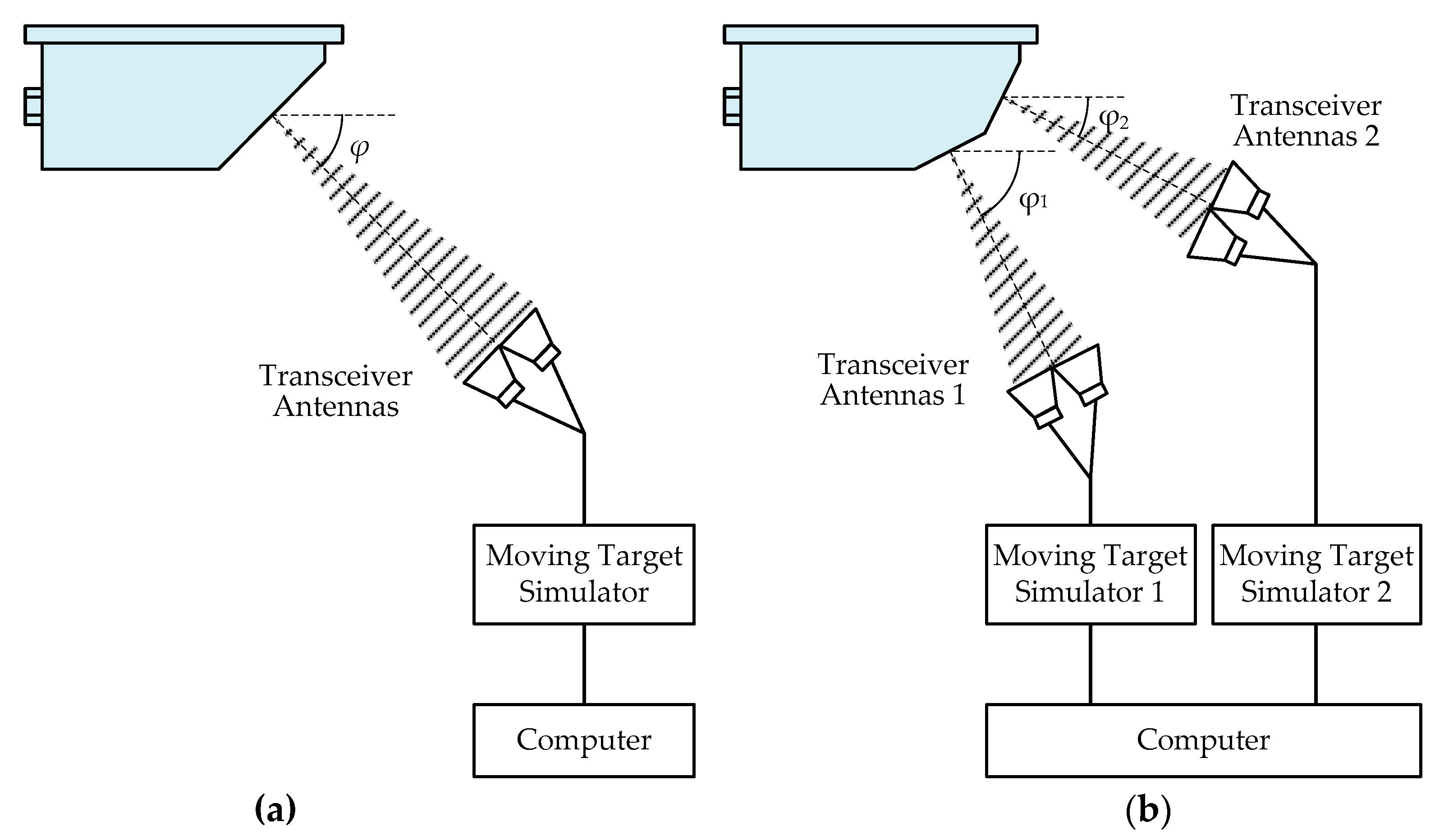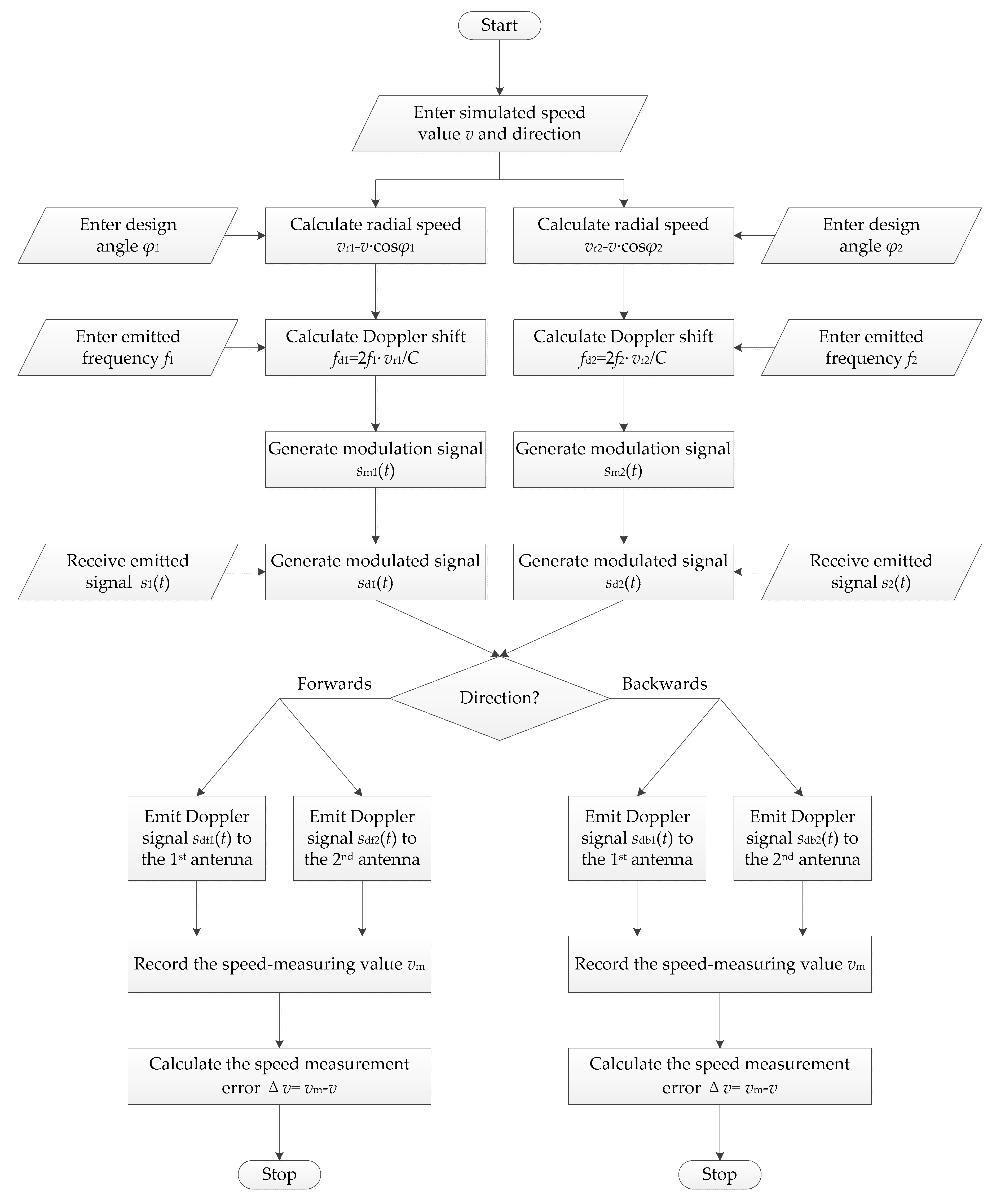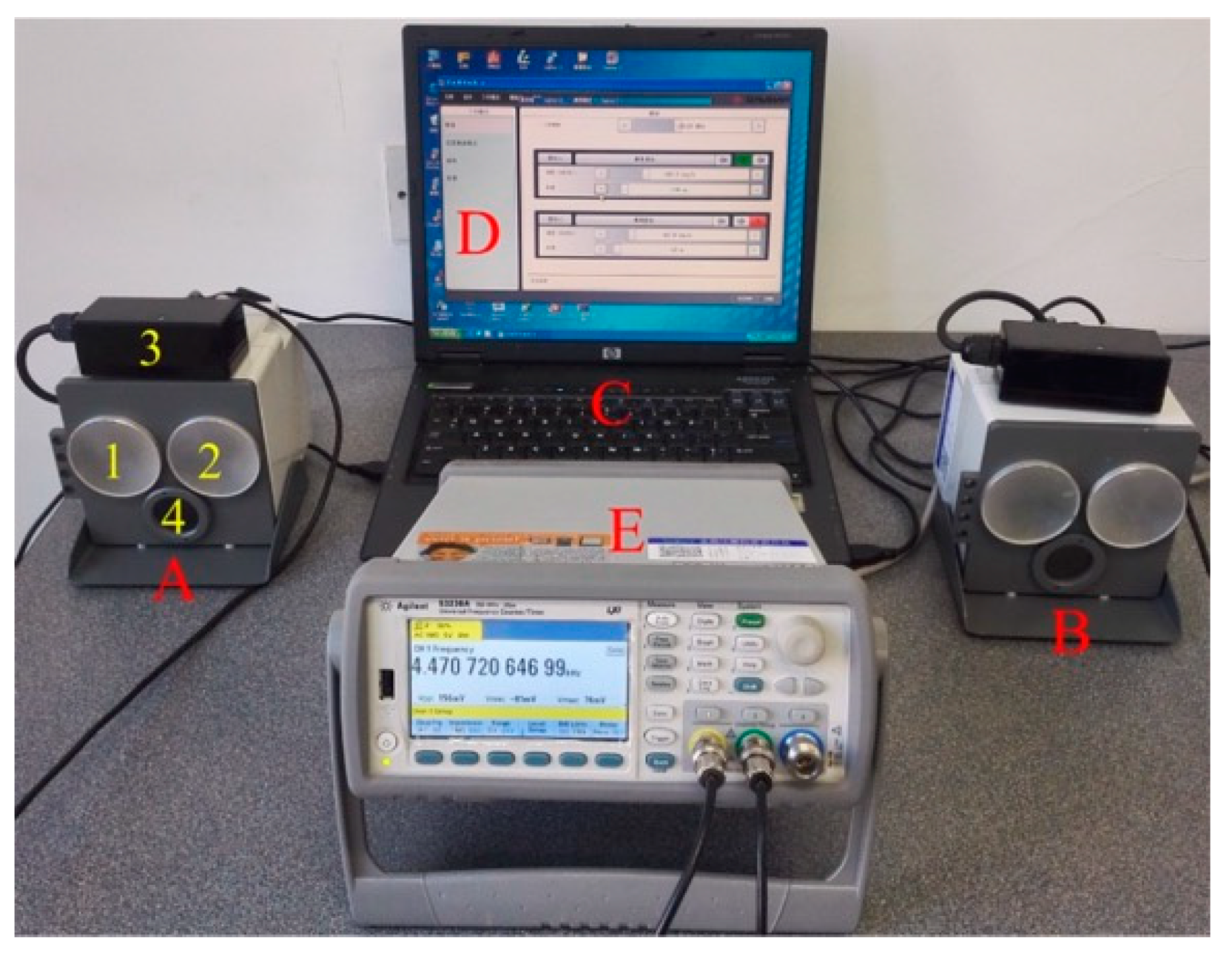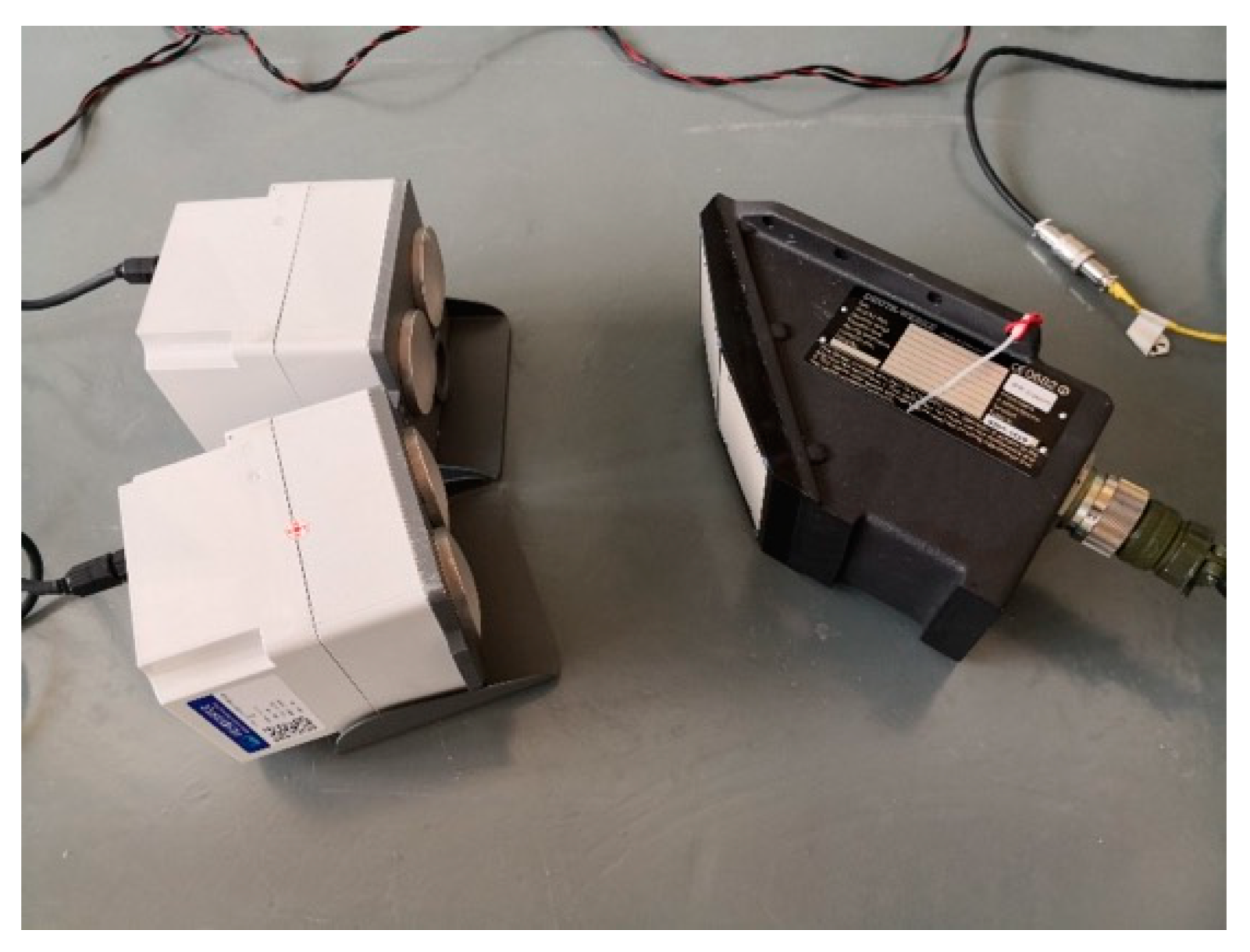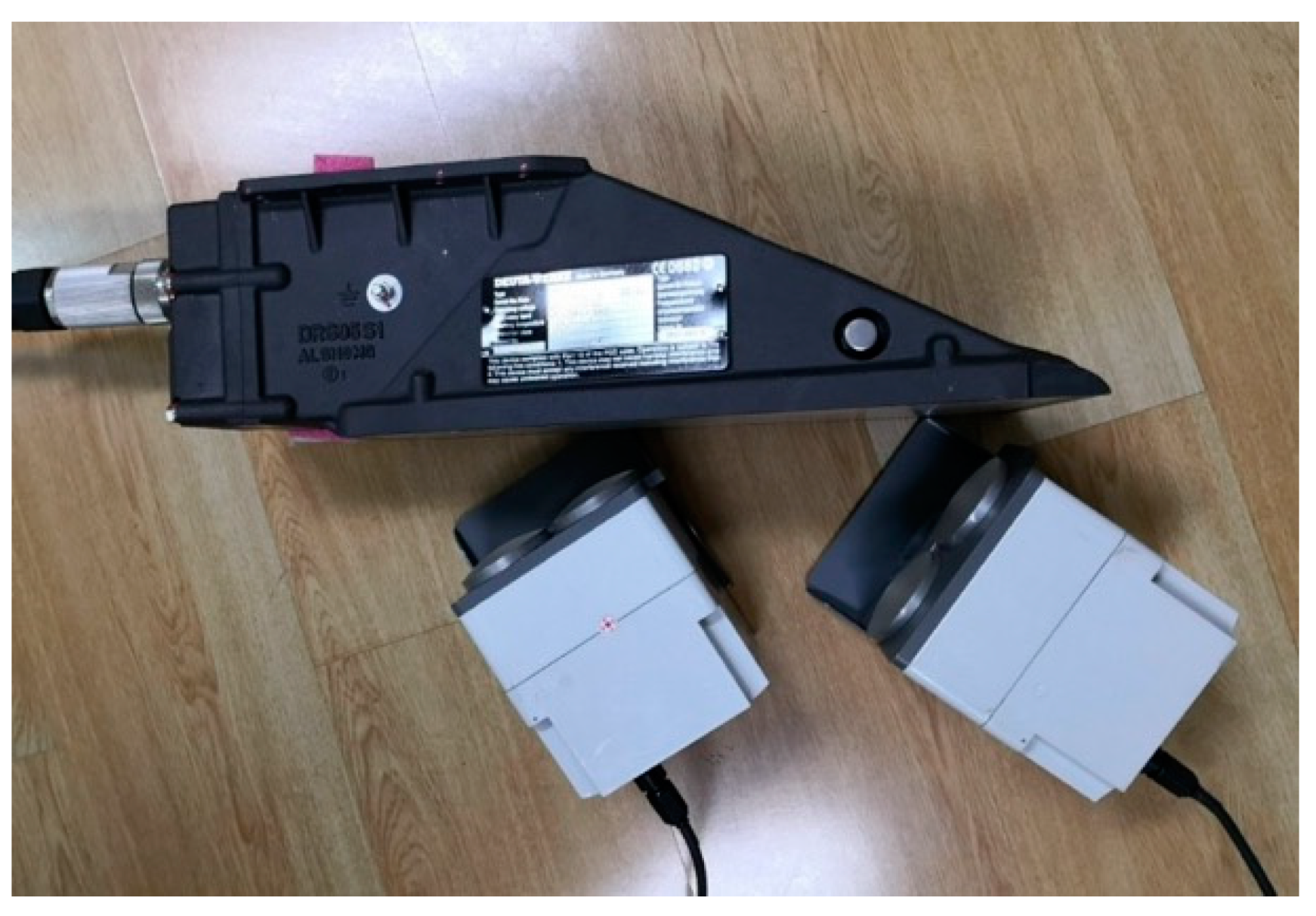To validate the effectiveness and feasibility of the proposed speed calibration method, two typical train-borne dual-channel DRS samples were chosen to be calibrated in full range by using the realized simulation system to evaluate its technical performance in this section. The two types of samples were both DRS05 manufactured by DEUTA-WERKE GmbH, but the subtypes were different, namely DRS05/1a and DRS05S1c. A DRS05/1a sample (Serial Number: 15039067 /B) was chosen to be calibrated in the laboratory with controlled environmental conditions and a DRS05S1c sample (Serial Number: 11037430 /A) was chosen to be calibrated in the field with uncontrolled environmental conditions.
5.1. Calibration Results of DRS05/1a in the Laboratory
DRS05/1a is mainly used for the speed measurement of urban rail trains in the railway freight dedicated lines of urban, suburban, and intercity areas. The calibration of a DRS05/1a sample was performed in the laboratory with the temperature range of (23 ± 5) °C and humidity lower than 80% RH, and without vibration and electromagnetic interference.
The calibration setup for the DRS05/1a sample is shown in
Figure 11. According to the specifications for the DRS05/1a sample, the design incident angle of its first channel is 50° and the nominal emitted frequency of that is 24,190 MHz, while the design incident angle of its second channel is 40° and the nominal emitted frequency is 24,060 MHz. The calibration parameters of the simulation system were set according to the design parameters of the DRS05/1a sample. For the first moving target simulator, the simulated emitted frequency was set to 24,190 MHz and the simulated incident angle was set to 50°. For the second moving target simulator, the simulated emitted frequency was set to 24,060 MHz and the simulated incident angle was set to 40°. The transceiver antennas of the first moving target simulator were aimed at the first antenna of DRS05/1a, while the antennas of the second moving target simulator were aimed at the second antenna of DRS05/1a at the same time. The simulated speed points were set to several typical values from 5.00 km/h to 500.00 km/h through the control software on the laptop.
Table 10 shows the numerical calibration results of the DRS05/1a sample at various simulated speed points. The average of ten independent speed measurement values was taken as the measured value of the simulated speed to calculate the simulated speed measurement error and relative error. It can be seen from
Table 10 that all of the relative errors at the above simulated speed points were within the range of ±0.5% in full range of (5~500) km/h and the repeatability of ten independent measurement values was quite good, validating that the technical performance of the simulation system and the new speed calibration method by using the moving target simulator are an effective calibration method for train-borne dual-channel DRSs in the laboratory with controlled environmental conditions.
5.2. Calibration Results of DRS05S1c in the Field
DRS05S1c has an integrated protective cover against the impact of stones and extreme temperatures, and is especially suitable for measuring the speed of high-speed trains in high-speed railway passenger dedicated lines. The calibration of a DRS05S1c sample was performed in the field with uncontrolled environmental conditions.
The calibration setup for the DRS05S1c sample is shown in
Figure 12. According to the specifications, DRS05S1c has the same technical parameters as DRS05/1a, and therefore the calibration parameters of the simulation system were setup the same as those in
Section 5.1. Compared with DRS05/1a, DRS05S1c has an integrated protective cover at the bottom, and it cannot determine the location of the two channels of DRS05S1c by visual observation and the aiming device of the moving target simulator. Therefore, it needed to adjust the positions of the two moving target simulators according to the amplitudes of the incident CW microwave signals received from the two channels of DRS05S1c before calibration, and ensured that the transceiver antennas of the two moving target simulators are aimed at the two corresponding channels of DRS05S1c at the same time.
The simulated speed points of the DRS05S1c sample were the same as those of the DRS05/1a sample within the speed range of (5.00~500.00) km/h.
Table 11 shows the numerical calibration results of the DRS05S1c sample at various simulated speed points. The calibration results performed ten independent speed measurements at every simulated speed point, and took the average value of ten independent speed measurement values as the measured value of the simulated speed to calculate the simulated speed measurement error and relative error. It can be seen from
Table 11 that all the relative errors of the DRS05S1c sample at the simulated speed points were also within the range of ±0.5% in full range of (5~500) km/h. However, the repeatability of ten independent measurement values was not as good as that of the DRS05/1a sample at high speed points. This was partly caused by the uncontrolled and unknown environmental conditions. Another important reason was the aiming error between the transceiver antennas of the moving target simulator and the corresponding channel of DRS05S1c.
5.3. Uncertainty Evaluation
Referring to the international standard for the uncertainty of measurement [
24] and China’s national standard for the evaluation and expression of uncertainty in measurement [
25], the uncertainty of the speed calibration results in
Section 5.1 and
Section 5.2 is evaluated in this subsection.
In the uncertainty evaluation for speed calibration, the mathematical model for the speed measurement error Δ
v is given in Equation (10). Therefore, the uncertainty model can be expressed by Equation (17):
where
uc(Δ
v) is the standard uncertainty of the speed measurement error Δ
v;
u(
vm) is the standard uncertainty component associated with the measured value of simulated speed
vm;
u(
v) is the standard uncertainty component associated with the reference value of simulated speed
v; and
c1 and
c2 are the sensitivity coefficients, which equal to
Therefore, the standard uncertainty
uc(Δ
v) in Equation (17) can be simplified as
The standard uncertainty component
u(
vm) associated with the measured value of the simulated speed
vm includes two sub-components
u1(
vm) and
u2(
vm).
u1(
vm) is the standard uncertainty sub-component associated with the repeatability of the ten independent speed measurement values in
Table 10 and
Table 11, and can be calculated by the Bessel formula:
where
xn denotes the reference value of the
nth simulated speed point;
denotes the
jth measurement value of the
nth simulated speed point;
denotes the average value of ten independent measurement values of the
nth simulated speed point; and
M = 10. Since the average value of ten independent speed measurement values was taken as the measured value of the simulated speed to calculate the simulated speed measurement error, the standard uncertainty sub-component associated with the speed measurement repeatability can be calculated by Equations (20) and (21):
where
u2(
vm) is the standard uncertainty sub-component associated with the speed measurement resolution of DRS05/1a and DRS05S1c, which is 0.1 km/h, as shown in
Table 10 and
Table 11, and therefore can be calculated by Equation (22):
Since the two sub-components
u1(
vm) and
u2(
vm) are independent and uncorrelated, the standard uncertainty component
u(
vm) can be calculated as
The standard uncertainty component
u(
v) associated with the reference value of the simulated speed
v depends on the simulated speed error of the simulation system. According to the technical parameters of the simulation system given in
Table 1, the MPE of the simulated speed was ±0.05 km/h and is estimated by rectangular distribution. Then, the standard uncertainty component
u(
v) can be calculated as
According to the calculation results of Equations (23) and (24), the standard uncertainty
uc(Δ
v) can be calculated by Equation (19). The expanded uncertainty
U(Δ
v) of the speed measurement error Δ
v, where the coverage factor
k is 2, can be expressed by Equation (25):
Based on the above analysis of the uncertainty evaluation and the speed calibration results of two train-borne dual-channel DRS samples given in
Table 10 and
Table 11, the uncertainty evaluation results of the two DRS samples were respectively calculated and given in
Table 12 and
Table 13. For the speed calibration results of the DRS05/1a sample, the maximum value of the expanded uncertainty of the speed measurement error was 0.09 km/h, as shown in
Table 12. For the speed calibration results of the DRS05S1c sample, the maximum value of the expanded uncertainty was 0.12 km/h, as shown in
Table 13. Therefore, the expanded uncertainty of the DRS05S1c calibration results was larger than that of the DRS05/1a calibration results, which means that the calibration results of DRS05/1a were more accurate than those of DRS05S1c. The main reason for this is that the repeatability of ten independent speed measurements of DRS05/1a was better than that of DRS05S1c. Furthermore, the expanded uncertainty values of the two DRS samples were both less than one third of the simulated speed MPE of the simulation system given in
Table 1, and therefore the speed calibration results of the two DRS samples given in
Table 10 and
Table 11 were both effective and reliable [
24,
25].


